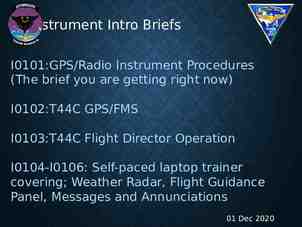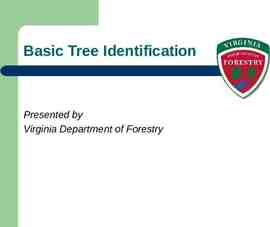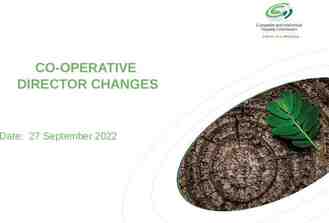What the Cloud can do for Computational Life Sciences:
13 Slides1.84 MB
What the Cloud can do for Computational Life Sciences: Biocep-R's Unified Perspective Karim Chine [email protected]
www.biocep.net
Definitions What is the Cloud ? in, the Cloud computing is a paradigm of computing in which dynamically scalable and often virtualized resources are provided as a service over the Internet.Users need not have knowledge of, expertise or control over the technology infrastructure in the "cloud" that supports them. Wikipedia Cloud Computing represents a new way to deploy computing technology to give users the ability to access, work on, share and store information using the internet. The cloud itself is a network of data centers- each composed of many thousands of computers working together- that can perform functions of software on a personal or busisness computer by providing users access to powerful applications, platforms and services delivered over the internet. Jeffrey F. rayport & Andrew Heyward (Marketplace LLC) What is R ? Open-source (GPL) software environment for statistical computing and graphics Lingua franca of data analysis. Repositories of contributed R packages related to a variety of problem domains in life sciences, social sciences, finance, econometrics, chemo metrics, etc. are growing at an exponential rate. What is Scilab ? Open-source (CeCILL) software package for numerical computations. Clone of Matlab. Widely used for engineering and scientific applications. What is an SCE ? Scientific Computing Environment : enables users to solve a wide variety of problems through flexible user interfaces that can model in a natural way the mathematical aspects of many different problem domains. Examples : Matlab, Mathematica, Scilab, R.
e-Science perspective / Biocep-R use cases Lower the barriers for accessing cyber infrastructures. Help dealing with the data deluge (take the computation to the data) Enable collaboration within computing environments Simplify the science gateways creation and delivery process Bridge the gap between existing SCEs and grids/clouds Lower the barriers for using distributed computing, leverage the elastic cloud
e-Science perspective / Biocep-R use cases Bridge the gap between mainstream SCEs Bridge the gap between mainstream SCEs and workflow workbenches Provide a universal computing toolkit for scientific applications Provide frameworks for computational back-ends scalability Provide the building blocks of a platform for computational education Provide the building blocks of a traceable and reproducible computational esearch platform Provide the building blocks of an international portal for scientific computing on demand, collaboration and computational artifacts/resources sharing
Computational Ecosystem, "The" Open Platform Computational Components R packages : CRAN, Bioconductor, Wrapped C,C ,Fortran code Scilab modules, Matlab Toolkits, etc. Open source or commercial Computational User Interfaces Computational Resources Virtual workbench within the browser Hardware/OS agnostic computing engine : R, Scilab,. Collaborative views Clusters, grids, cloud servers free: academic grids (NGS, EGEE, etc.) or pay-per-use: EC2 Built-in views / Plugins / Spreadsheets Open source or commercial Computational Data Storage Local, NFS, FTP, Storage Web Services (S3) free or commercial Computational Scripts R / Python / Groovy On client side: interactivity. On server side: data transfer . Generated Computational Web Services Stateful or stateless, automatic mapping of R data objects and functions Computational Application Programming Interfaces Java / SOAP / REST, Stateless and stateful
Biocep-R, Technologie Environment
R Server R Virtualization rJava / JRI JavaGD Object Export / Import Layer mapping RServices API Server Side - Personal Machine, Academic Grids, Clusters, Clouds Client Side - Internet RServices skeleton Graphic devices skels R packages skels Virtual R Workbench Internet Browser Java Applet Virtual R Workbench URL Docking Framework R Console R Graphic Device Interactors R Workspace R Help Browser R Script Editor R Spreadsheet Groovy / Jython Script Editor
Computational Engines Pools / cloudbursting Pool A Pool B Pool C Node 1: Windows XP Node 2: Mac OS Front-end host Remote Objects Registry R-HTTP R-SOAP Node 3: 64 bits Server / Linux Parallel Computing Applications Borrow Rs Supervisor Use Rs Release Rs .NET Appli Perl Scripts logOn logOn Use R Use R logOff logOff Node 4 : EC2 virtual machine 1 Node 4 : EC2 virtual machine 1 Web Application Borrow R Cloudbursting Generate Graphics/Data via AWS Release R Node 5 : EC2 virtual machine 2
Elastic distributed computing on Amazon EC2
Shell’s Biocep-R-based statistical modelling cloud computing pilot Extracts from Shell’s cloud computing big rules document : The Global Solutions statistics group actively uses the open source “R” statistical modeling tool. An inexpensive platform upon which to run the statistical models was required with the ability to scale up and down depending on calculating demand. In order to achieve this, the pilot created an analytical application using a pool of stateless and, more importently, statefull “R” engines across multiple servers in Amazon using Biocep for integration and virtualisation of the “R” engine. Using Amazon enabled them to have On-demand access to high-powered computing facilities. Numerically intensive statistical applications can be handled by the cloud rather than slowing down the users own PC. Could be of great benefit in the Bio-Fuels research area, which will require very computationally intensive statistical techniques.
Disaster Recovery: By using virtual machine images on the cloud we can always restore to the initial state. If something goes drastically wrong with the cloud machine image we can simply scrap it and launch another instance. Safer to implement web apps on a virtual machine using AWS rather than in-house server. The Cloud can be used as a real-time collaborative workspace. Co-workers can work together and share statistical methodologies in a new and novel environment. The onset of Cloud Computing has greatly increased the availability of software for delivering web-based statistical applications. The benefits of which include: o No special configuration or changes are needed on users PCs. o No need for scripting of applications. o Compatible with all operating systems. o Updates can be made quickly and easily in a centralized manner. o Everybody has a browser. Familiar interface encourages use. o Statistical web-based applications can either be hosted on the cloud or an inhouse Shell server: which may be more appropriate for most confidential data. Contacts within Shell : Edwin Vansteenis, Shell Global Functions, Senior IT Architect, [email protected] Wayne W. Johnes, Shell Global Services, Statistical Consultant, [email protected]


















